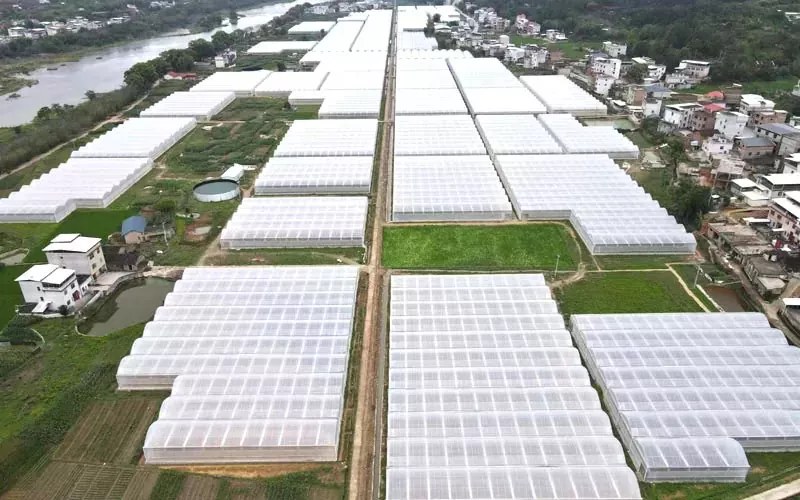Plastic Greenhouses: A Modern Solution for Sustainable Agriculture
2025-01-14
Plastic greenhouses have revolutionized modern agriculture, offering an efficient, cost-effective, and environmentally friendly way to grow crops. By creating a controlled environment, these greenhouses enable year-round cultivation, even in regions with extreme climates.
What Is a Plastic Greenhouse?
A plastic greenhouse is a structure covered with plastic film or sheets, designed to trap sunlight and retain heat, creating an optimal growing environment for plants. The plastic material serves as a barrier against external weather conditions while allowing light to pass through for photosynthesis.
Key Benefits of Plastic Greenhouses
1. Cost-Effective
- Compared to traditional glass greenhouses, plastic greenhouses are more affordable to build and maintain.
2. Durability
- Modern greenhouse plastics are UV-stabilized, water-resistant, and can last several years with proper care.
3. Extended Growing Season
- By regulating temperature, humidity, and light, plastic greenhouses enable continuous production regardless of the season.
4. Efficient Resource Use
- These structures conserve water and reduce fertilizer usage by minimizing runoff and evaporation.
5. Versatility
- Suitable for various crops, including vegetables, fruits, flowers, and herbs.

Types of Plastic for Greenhouses
1. Polyethylene (PE)
- Most common and cost-effective option. Lightweight and easy to install.
2. Polycarbonate
- More durable and resistant to impact. Provides better insulation.
3. Vinyl (PVC)
- Offers excellent clarity and UV resistance, making it ideal for areas with high sunlight exposure.
Applications of Plastic Greenhouses
- Commercial Farming: Supports large-scale vegetable and fruit production.
- Hobby Gardening: Popular among gardening enthusiasts for growing flowers and exotic plants.
- Nurseries: Used for propagating seedlings and young plants.
Sustainability Impact
Plastic greenhouses promote sustainable agriculture by increasing crop yields, reducing the need for chemical inputs, and conserving natural resources. Recycling used plastic covers further enhances their eco-friendliness.
Conclusion
Plastic greenhouses are an innovative and practical solution for modern agriculture. Their affordability, efficiency, and versatility make them a valuable tool for farmers and gardeners alike. With continued advancements in materials and design, plastic greenhouses are poised to play a vital role in global food security and sustainability.

